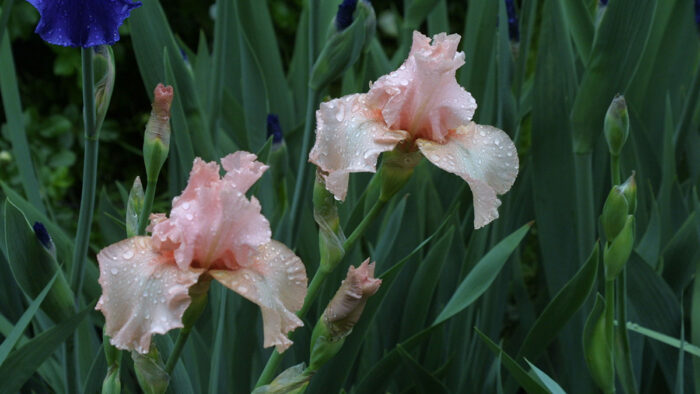
While omitting anchor plants won’t cause your garden to up and float away, it can make conceptualizing your design more difficult and lead to a space that lacks good form and structure. This can go unnoticed in the flower-filled growing season, but as winter approaches it can become more and more evident that the “bones” of your garden are minimal. On the other hand, including and repeating one or more anchor plants can ensure your garden has year-round interest and comes together cohesively. Below are some fantastic anchor plants for the Mid-Atlantic, which will all give a boost to your winter landscape without overpowering it during the rest of the year.
Learn more: Plants That Provide Structure in the Garden
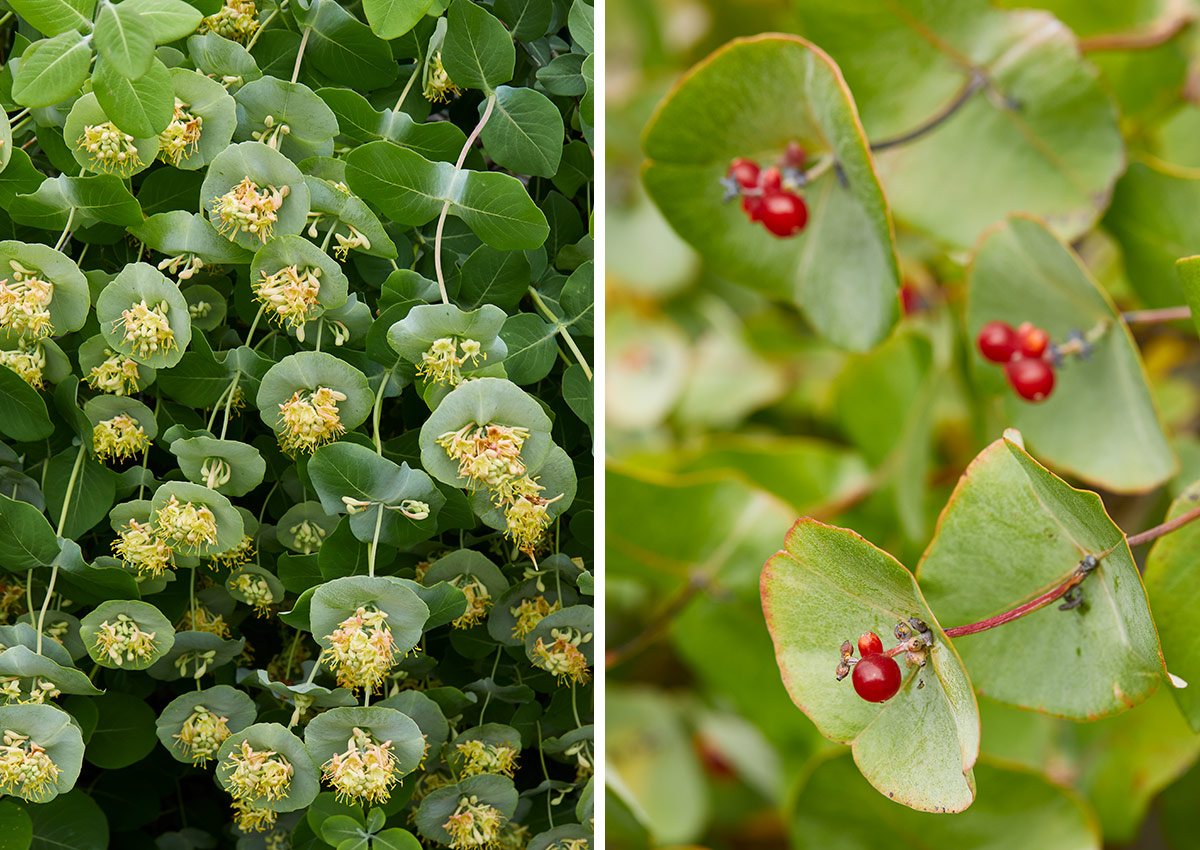
Kintzley’s Ghost® honeysuckle
Lonicera reticulata ‘P015S’
Zones: 4–8
Size: 6 to 12 feet tall and 3 to 6 feet wide
Conditions: Full sun to partial shade; average to dry, well-drained soil
Native range: Midwestern, mid-Atlantic, and southeastern United States
A common plant ID question I’m frequently asked is: “Is that a vining eucalyptus (Eucalyptus spp. and cvs., Zones 7–11) plant?” No, it’s not. But it is a wonderful native honeysuckle! With blue-green, circular foliage that looks like oxidized copper coins, Kintzley’s Ghost® honeysuckle is a real conversation piece. In addition to the noteworthy foliage, this robust woody vine is very drought tolerant when established and easy to prune and maintain. Pale yellow blooms emerge in spring that provide a good food source for insects. Following these flowers, red, showy fruit emerges for birds to enjoy. Ideally, you should provide a durable support for this twining vine that it can twist around. But it can be grown without a support, in which case it will take a form similar to a wide, mounded shrub.

Willow oak
Quercus phellos
Zones: 6–9
Size: 40 to 100 feet tall and 30 to 50 feet wide
Conditions: Full sun; consistently moist to well-drained soil
Native range: Mid-Atlantic and southeastern United States
Every time someone asks me what the first (or only) plant is you should add to a landscape, I always say to plant an oak. There are few other trees that can support as many species of insects and other wildlife as oak trees. Willow oak is one of my favorites because of its graceful, airy form. It makes a wonderful light shade tree, with plentiful branches that get very thin toward the tips, creating a fine-textured outline that looks like a pencil drawing. The Kelly green foliage is small and lance shaped, taking on warmer colors in autumn. The dainty leaves make fall cleanup easier too. Willow oak acorns are tiny and cute, only a half-inch across or less. Willow oaks are pyramidal when young, becoming broadly oval in maturity.
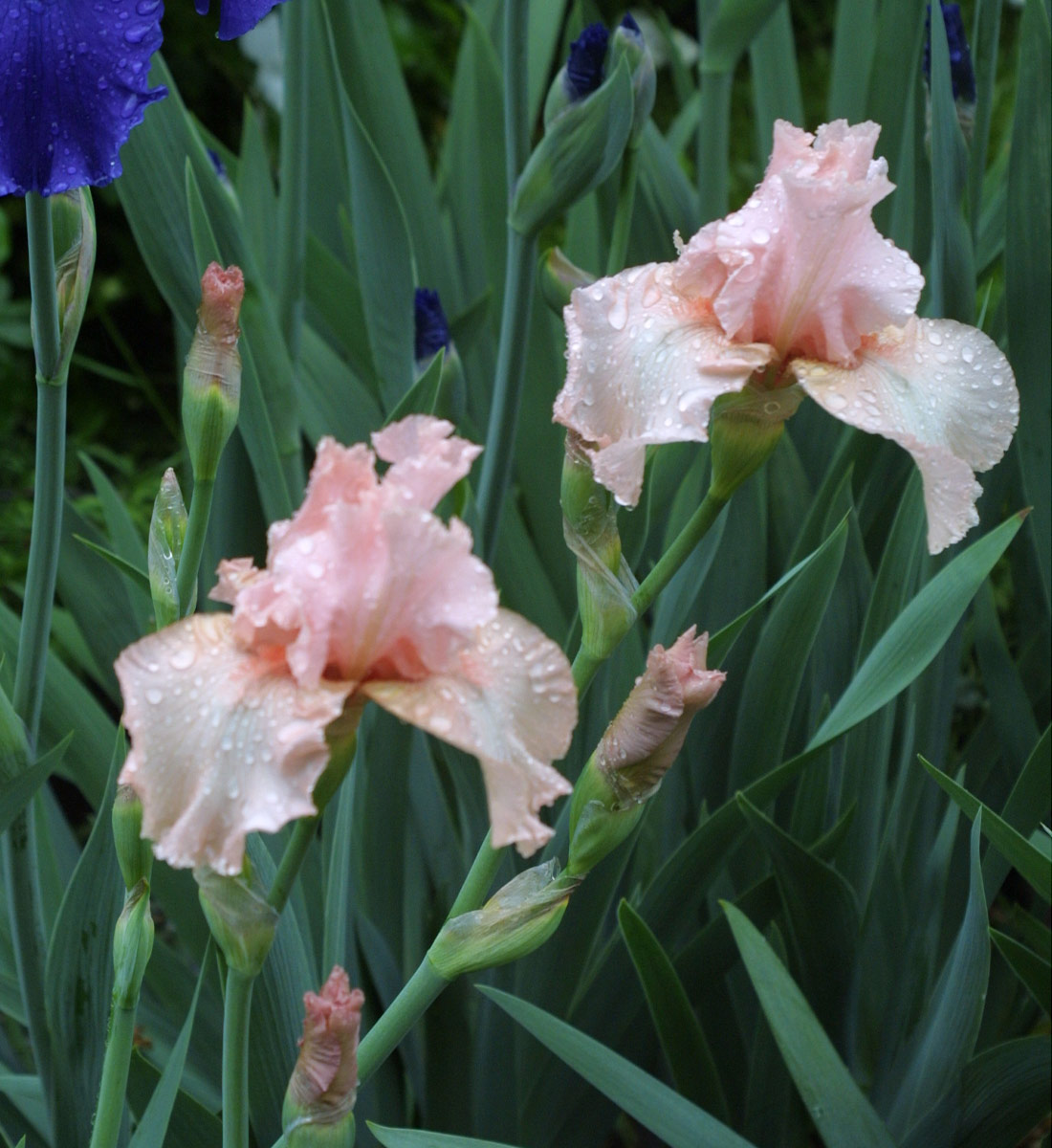
‘Beverly Sills’ bearded iris
Iris ‘Beverly Sills’
Zones: 3–9
Size: 2 to 3 feet tall and 1½ to 2 feet wide
Conditions: Full sun to partial shade; well-drained soil
Native range: Hybrid
This plant was introduced to me as a division from a friend, which they received as a division from a friend. ‘Beverly Sills’ remains one of my favorite bearded irises for its vigor and reliable late-spring flowers. These blooms have vibrant coral pink to apricot petals, with a tangerine beard on the falls. The stately, architectural foliage maintains a presence all year round in my Pennsylvania garden. The sword-like foliage creates a sharp vertical contrast with other flowers and shrubs throughout the season. Drought tolerant once established, bearded irises are tolerant of most garden soils, but well-drained sites are preferable for the rhizomes that grow close to the soil surface. Over time the plants can form large clumps to make even bigger statements, but lifting and dividing clumps every few years keeps them vigorous and less congested.
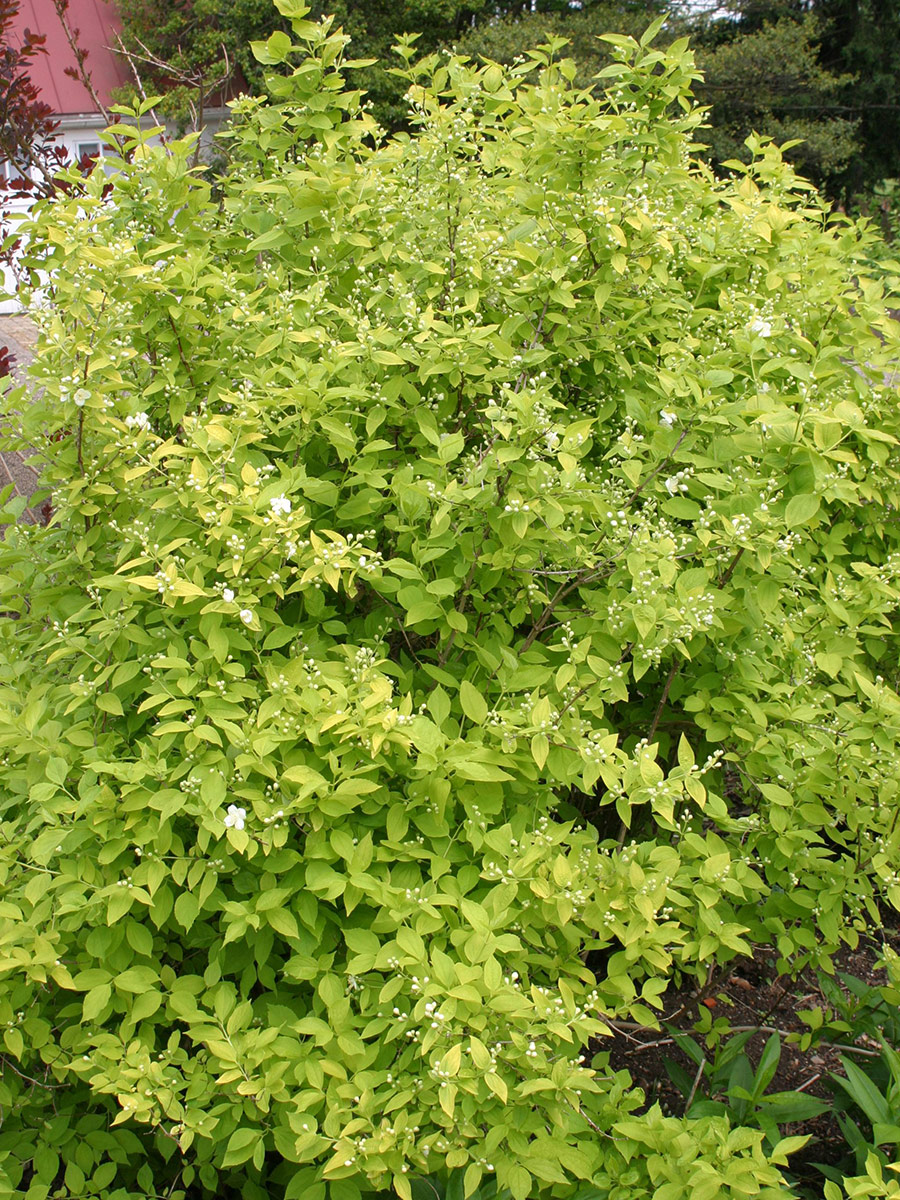
Gold-leaf mock orange
Philadelphus coronarius ‘Aureus’
Zones: 4–9
Size: 6 to 8 feet tall and 3 to 6 feet wide
Conditions: Full sun to partial shade; well-drained soil
Native range: Southeastern Europe and southwestern Asia
When in bloom, you may smell mock oranges before you see them. Gold-leaf mock orange provides the same experience, but with brilliantly chartreuse foliage that shines over other plants in the landscape. Graceful, arching branches form simple, four-petaled, white flowers along the branches. The sweet orange-blossom fragrance perfumes the air in late spring, while the vibrant colored foliage holds its own throughout the whole growing season. This shrub will illuminate a bed when paired next to purples and dark greens or add excitement next to reds and oranges. Prune out older branches in winter to improve flowering, vigor, and form. The foliage color will be better with more sun. Arching branches of gold-leaf mock orange make a great addition to floral arrangements and are easy to cut any time of the year.
And for more Mid-Atlantic regional reports, click here.
To discuss these plants or ask other gardening questions, chat with the author on the Gardening Answers forum.
Find more amazing anchor plants:
- Plants to Build a Bed Around
- Structural Plants for Enduring Winter Interest in the Mid-Atlantic
- Plants That Provide Structure in the Garden
David Mattern is a horticulturist at Chanticleer, a public garden In Wayne, Pennsylvania. He documents his garden journey on Instagram @matternii.
Fine Gardening Recommended Products

ARS Telescoping Long Reach Pruner
Fine Gardening receives a commission for items purchased through links on this site, including Amazon Associates and other affiliate advertising programs.

Corona® Multi-Purpose Metal Mini Garden Shovel
Fine Gardening receives a commission for items purchased through links on this site, including Amazon Associates and other affiliate advertising programs.

Gardener's Log Book from NYBG
Fine Gardening receives a commission for items purchased through links on this site, including Amazon Associates and other affiliate advertising programs.


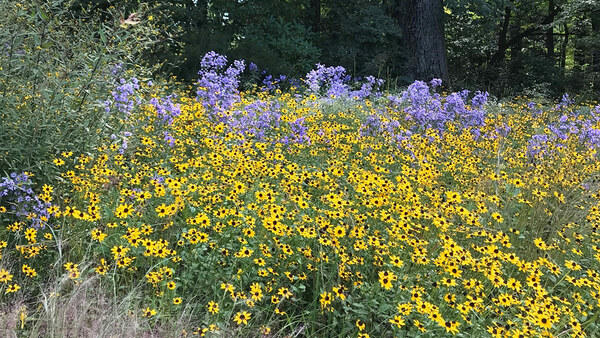
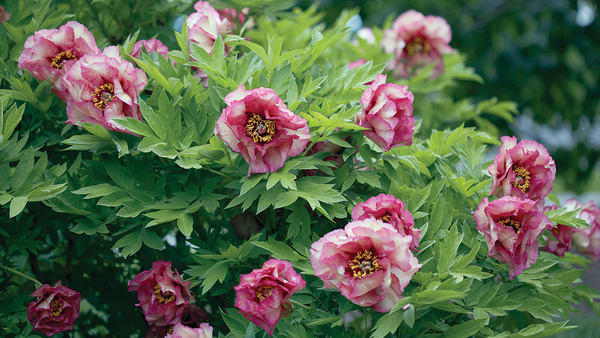
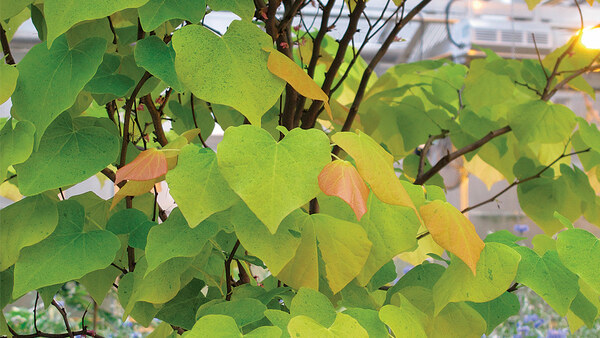


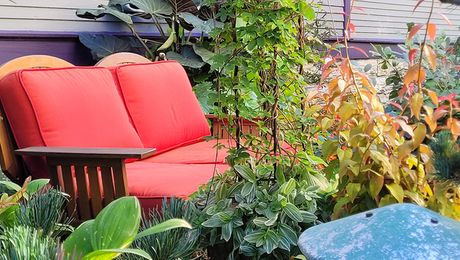











Comments
Log in or create an account to post a comment.
Sign up Log in